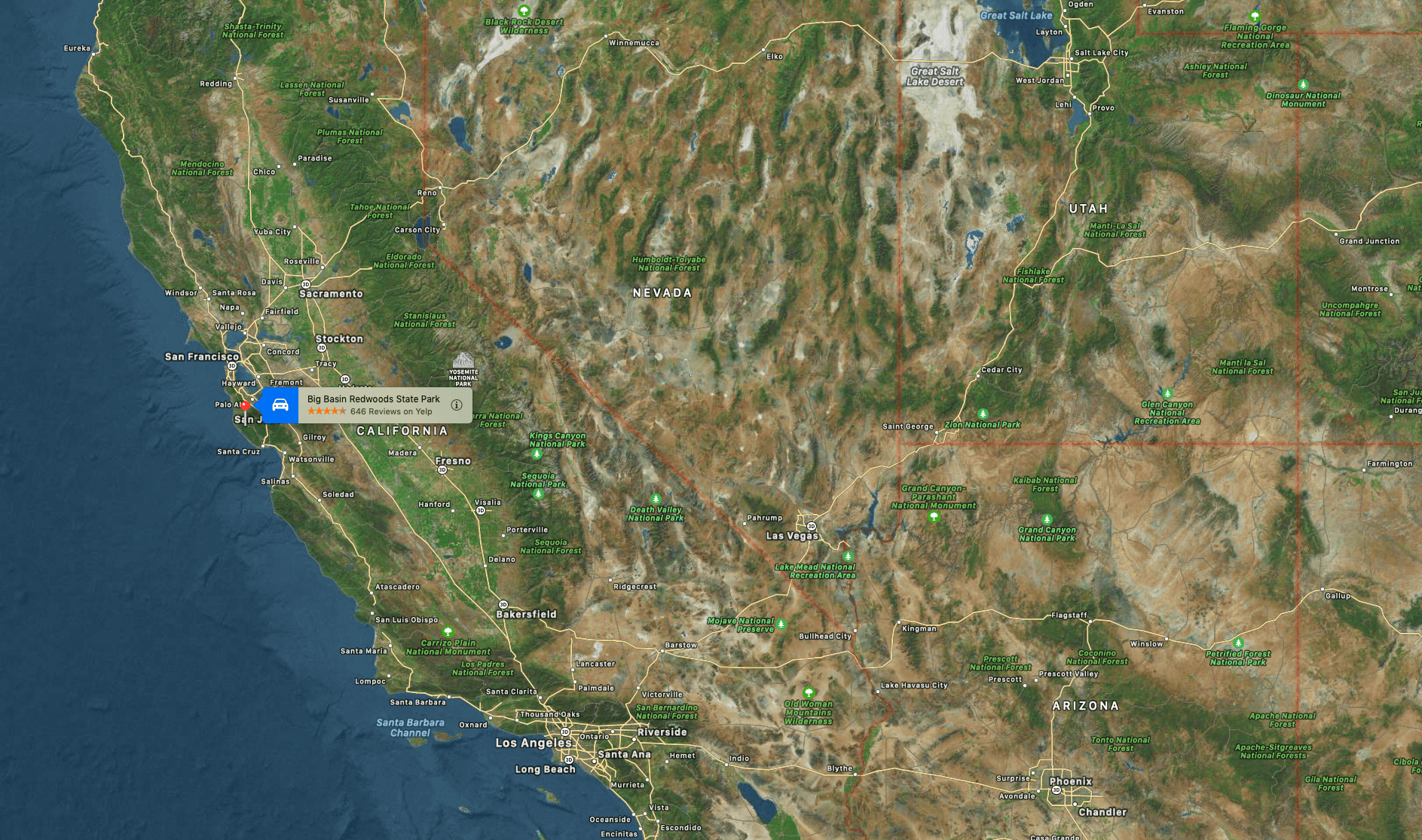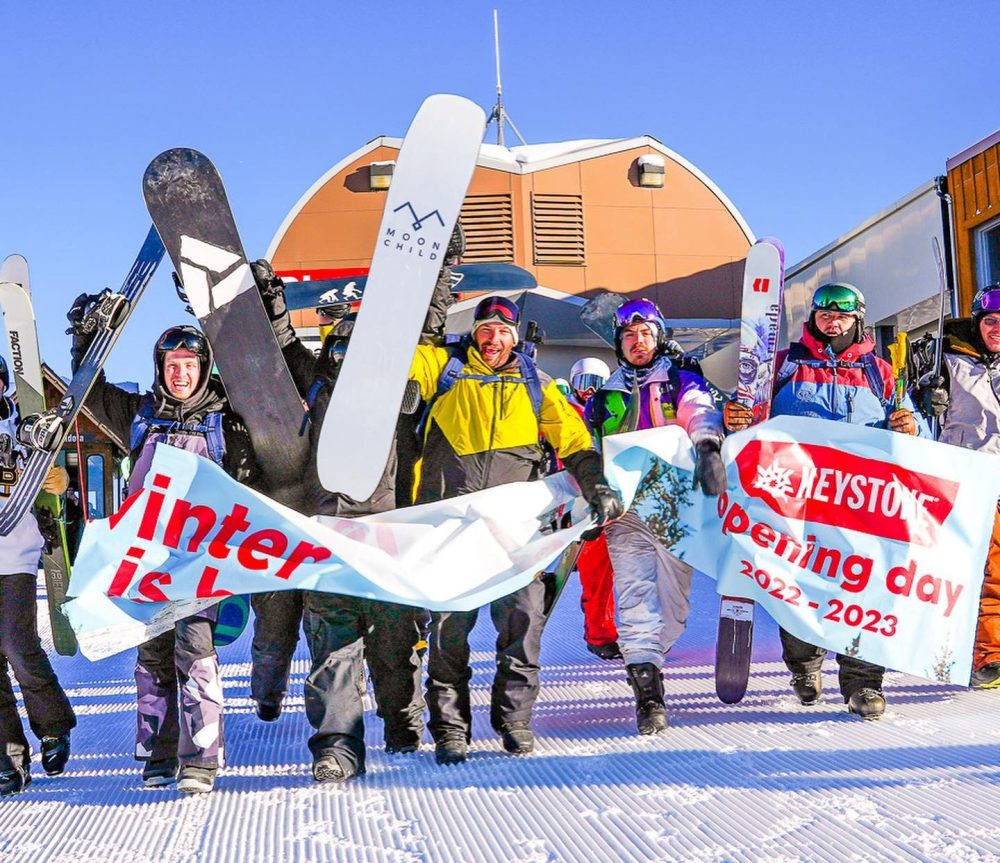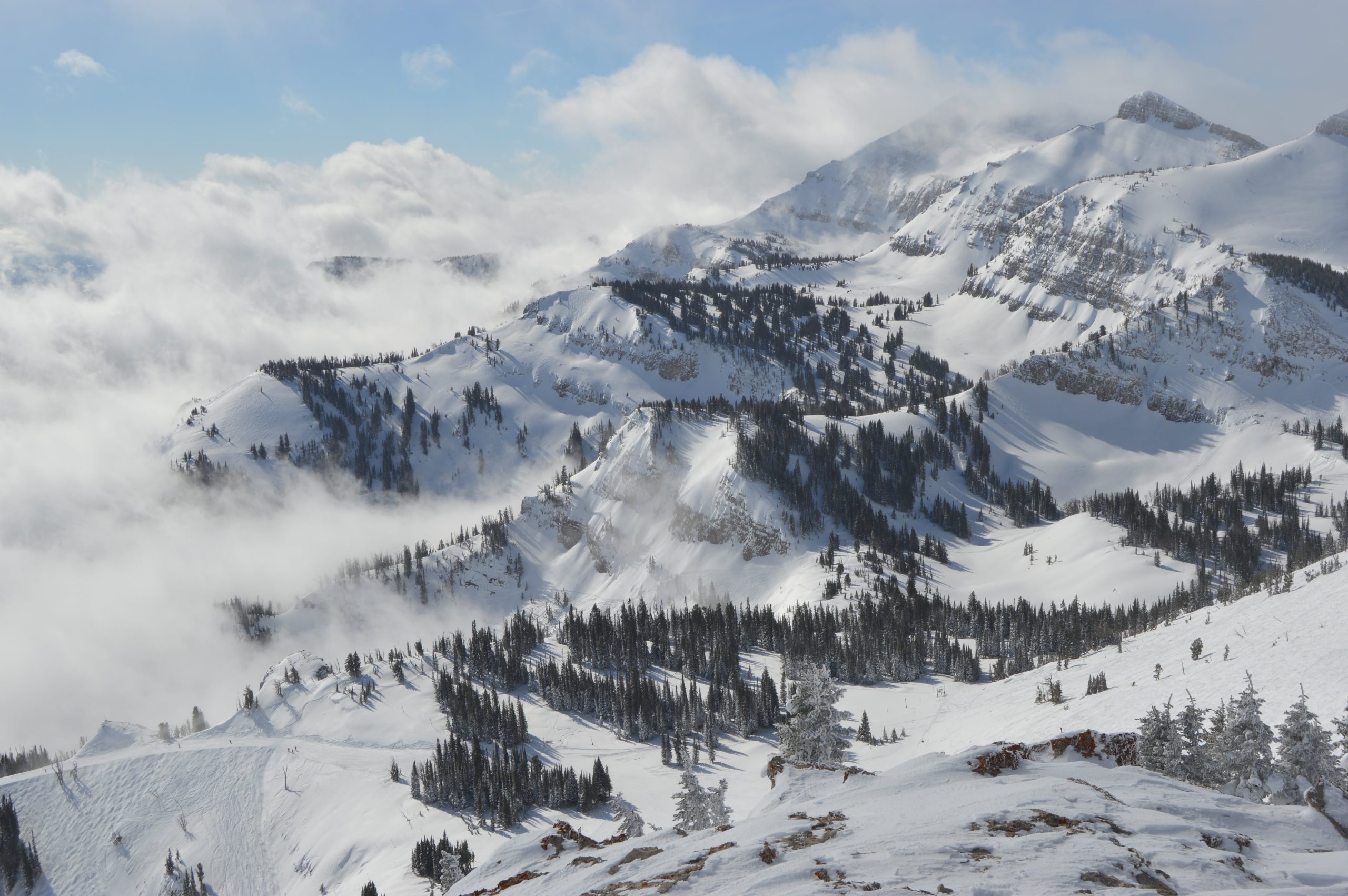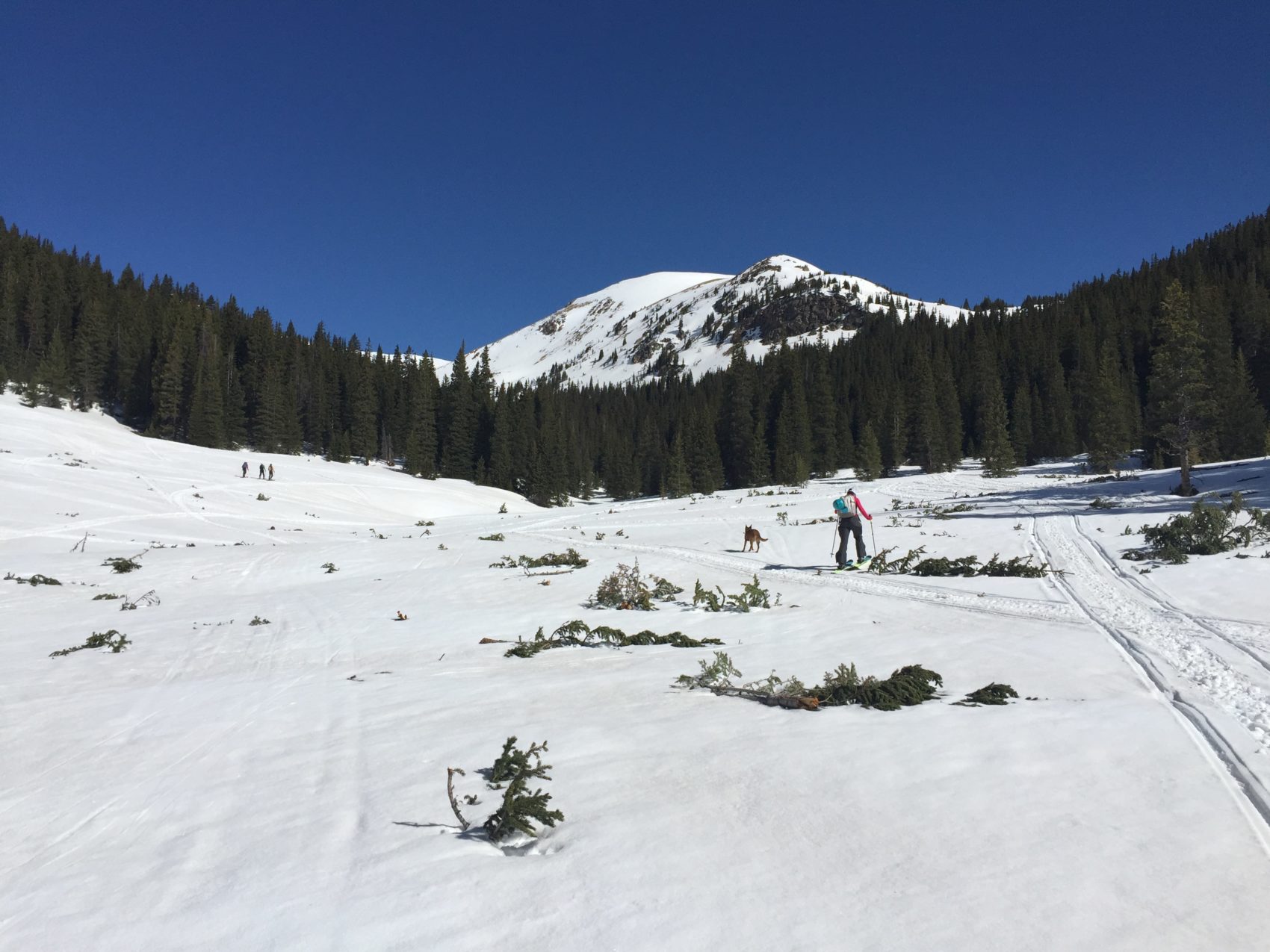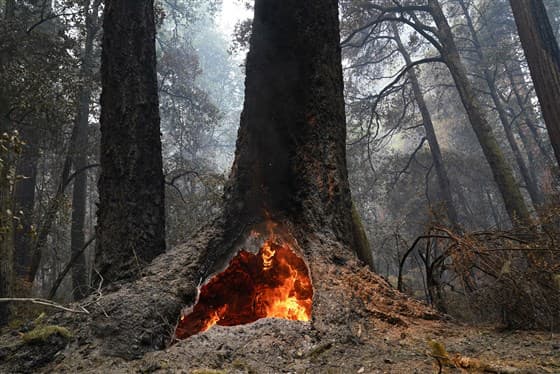
California State Parks is updating the public on the status of the structures destroyed at Big Basin Redwoods State Park (SP) from the CZU Lightning Complex Fire that continues to burn in Santa Cruz and San Mateo counties. However, due to extensive damage and hazardous conditions, State Parks has not fully assessed the damage to all the structures, including historic ones built in the 1930s, and the treasured old-growth redwood trees inside California’s oldest state park. The department advises the public not to enter the park as it remains closed.
As of today, these are the structures the department can confirm were destroyed:
- Historic Park Headquarters
- Historic (Main) lodge
- Ranger Station
- Nature Museum
- Store
- Maintenance Shop
- Multiple park residences, including some Saddle Mountain Property structures
- Multiple campground bathrooms
- Gatehouse
- Bridge between North Escape Road and Gazos Creek Road
- Many structures at Little Basin
- Jay Camp Seasonal Housing
Notably, the park’s wastewater plant survived the fire undamaged. The plant processes wastewater for the entire park, including its campgrounds, residences, and administrative and maintenance buildings. Its continued functionality is an essential element in rebuilding the park in the future.
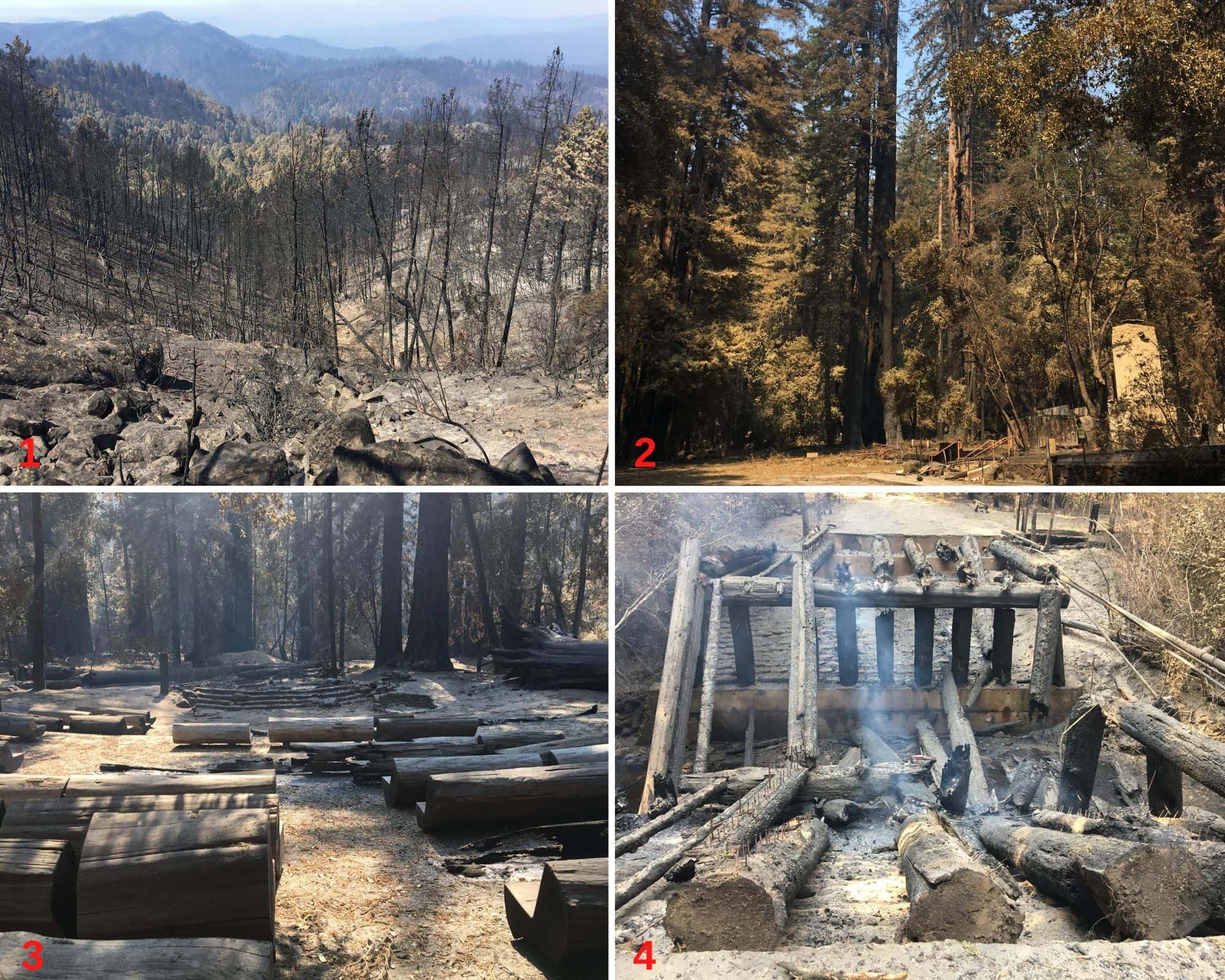
Status of Coast Redwoods
Based on its initial appearance, the Mother of the Forest and the Father of the Forest trees were both affected by the wildfires but remain generally healthy. The Auto Tree sustained moderate to extensive fire damage but remains standing. Old-growth stands in the vicinity of the entrance road and lower campgrounds appear to have experienced a range of fire intensities, with the upper crowns of some trees burned while other trees remained unburned. Additional assessments still need to be done to understand the health of these trees.
Old-growth redwoods have experienced fire many times over the centuries, as evidenced by fire scars and dendrochronology. Mature coast redwoods’ thick bark and unique chemical composition make them highly resistant to fires. Younger redwoods that have not developed mature bark may experience crown mortality, but all redwoods have the chance to re-sprout from their roots or unsprouted buds covering the majority of the tree. Even trees that look completely incinerated can recover fully, given time.
Although fire is an integral part of creating old-growth forests and maintaining healthy forests, it is unknown how intensely this fire burned throughout the park.
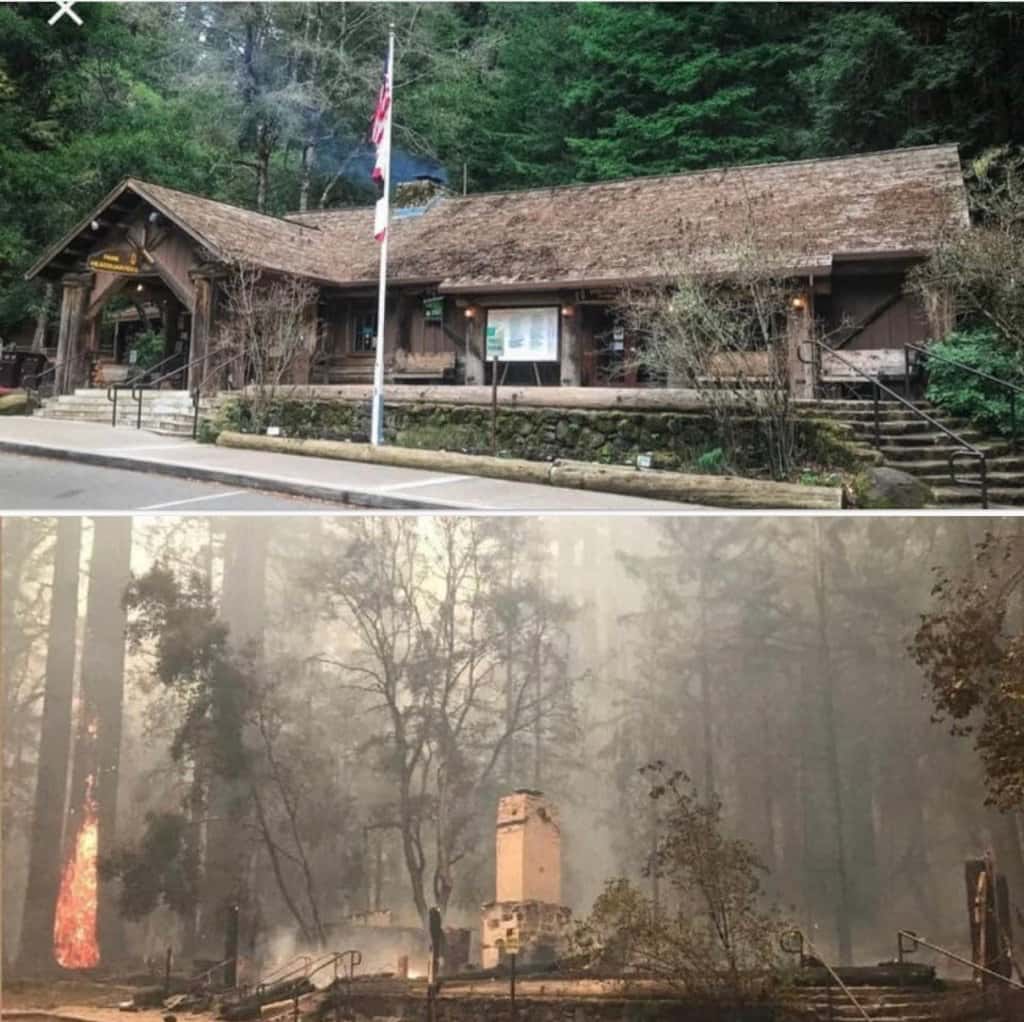
Campgrounds Remain Closed
All campgrounds in all Santa Cruz and San Mateo counties’ state beaches remain temporarily closed to reserved camping due to public safety concerns. The closures are in effect through Tuesday, Sept. 8, 2020, in Half Moon Bay, Manresa, New Brighton, Seacliff, and Sunset state beaches. The remaining state parks and beaches in these counties remain temporarily fully closed until further notice. The public is advised not to travel to these counties and others impacted by ongoing wildfires. Reservation holders have been notified and full refunds given. Reservation holders can contact ReserveCalifornia at (800) 444-7275. Hours of operation: seven days a week, from 8 a.m. to 6 p.m. PDT.
Due to the active nature of the wildfires, the public is advised to always check ahead, as conditions may evolve rapidly. State parks peace officers are patrolling the evacuated parks and assisting CAL FIRE and local law enforcement agencies in communities impacted by the wildfires.
For the latest information on state park units affected, please visit www.parks.ca.gov/Incidents. For the latest information on the wildfires, please visit https://www.fire.ca.gov/incidents/.
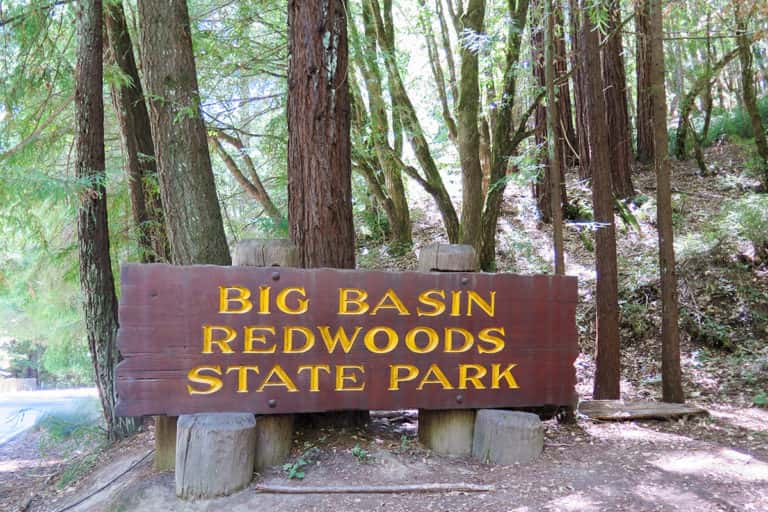
Park History
Established in 1902, Big Basin Redwoods SP preserves more than 18,000 acres and has been the heart of the California State Parks System for its iconic giant, ancient coast redwoods that are between 1,000 to 2,500 years old. The park’s spectacular views of the Pacific Ocean, lush waterfalls, and a fascinating natural and cultural history have made it a destination for families to camp or hike the more than 80 miles of roads and trails the park offers. This unique ecosystem of ancient coast redwood trees has captured the interest and dedication of many people from around the world.
The Big Basin area was home to the Cotoni and Quiroste tribes, two of more than 50 tribes comprising the Ohlone culture of the San Francisco and Monterey Bay areas. Rancho del Oso has served as a wild and rugged landmark to travelers along the coast since Spanish sailors watched for the massive cliffs they called Sierra Blanca from their galleons in the 1600s. The Waddell Valley is also a sanctuary to several endangered and threatened species, including red-legged frogs, San Francisco garter snakes, steelhead, and Coho salmon.
